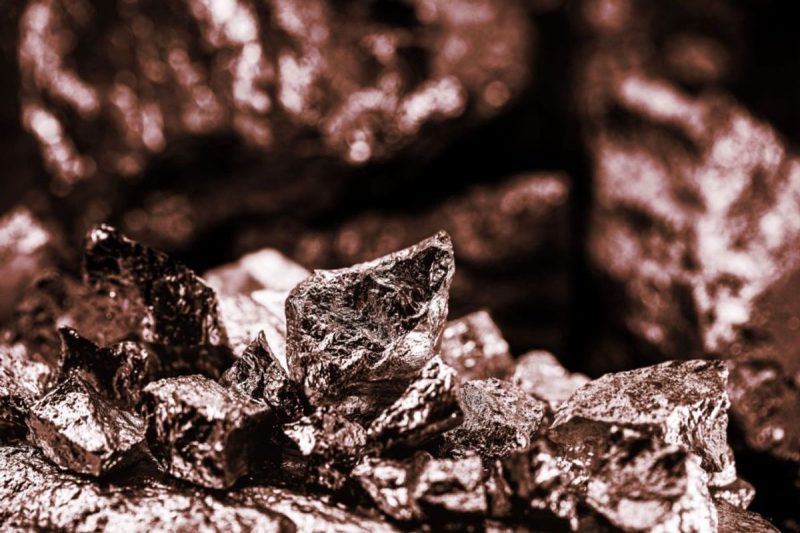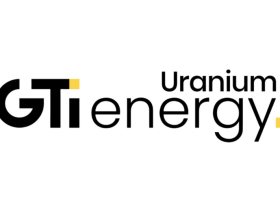The S&P/TSX Venture Composite Index (INDEXTSI:JX) reacted to statements from the Canadian and US central banks last week, falling 3.11 percent over the course of the five day period to close at 509.1.
The decline followed more uncertainty about the future of interest rates as both Bank of Canada Senior Deputy Governor Carolyn Rogers and US Federal Reserve Chair Jerome Powell made statements.
Rogers suggested that elevated rates may be here for the long term in Canada. “It may be tempting to believe the low rates that we all got used to will eventually come back. But there are reasons to think they may not,” she said. Meanwhile, Powell suggested that another rate hike is not off the table in the US. Both central bankers said the effects of the rate hikes will need to work themselves through the economy before decisions on future measures can be made.
How did TSXV-listed resource juniors perform against that backdrop? Here’s a look at last week’s top five gainers.
1. BCM Resources (TSXV:B)
Weekly gain: 40 percent; market cap: C$19.9 million; current share price: C$0.105
BCM Resources is a junior explorer that is focused on its flagship Thompson Knolls copper-gold-molybdenum project located in Utah’s Great Basin. The last news from the company’s drill program at the site was released on May 24, and it highlights a 155.4 meter intercept at 0.66 percent copper, 0.12 grams per metric ton (g/t) gold and 7.4 g/t silver.
The most recent update from BCM came on September 6, when it increased the size of its position at Thompson Knolls by 15 percent after staking an additional 31 claims; it now covers a land package of 2,242 hectares. BCM said the new claims will allow the company to have full control of the land needed for potential future mining operations at the site.
2. Benton Resources (TSXV:BEX)
Weekly gain: 38.1 percent; market cap: C$24.79 million; current share price: C$0.145
Benton Resources is a junior exploration company operating on a project generator model. The company’s current portfolio of licenses, option agreements and partnerships includes gold, silver, nickel, copper and lithium sites in Ontario and Newfoundland. Its most recent acquisition is the Great Burnt copper-gold project in Newfoundland.
Shares of the company have been rising over the past two weeks and gained an additional 38.1 percent last week, climbing to C$0.145. These gains came after news on October 30, when Benton announced the acquisition of a 100 percent interest in the mineral license surrounding the northern portion of Great Burnt. Then, on November 1, the company reported that the first two of 11 drill holes at Great Burnt had encountered ‘excellent’ copper grades of 4.13 percent over 3.25 meters and 8.31 percent over 13 meters. Benton will be expanding its drill program to at least 4,000 meters.
Benton released further news on November 2, saying it had won the Explorer of the Year award at the Canadian Institute of Mining’s Mineral Resource Review in Newfoundland. The award was presented for its Killick and Kraken lithium discovery.
3. Adventus Mining (TSXV:ADZN)
Weekly gain: 38 percent; market cap: C$57.48 million; current share price: C$0.345
Adventus Mining is a copper and gold development company focused on projects in Ecuador. Its flagship operation is the El Domo deposit at its Curipamba site located north of Guayaquil in Central Ecuador, which it owns in partnership with Salazar Resources (TSXV:SRL,OTCQB:SRLZF). Its last exploration update from the site on March 20 delivered assay results of 3.13 percent copper, 0.79 g/t gold, 4.02 percent zinc and 27.9 g/t silver over 14.19 meters.
While shares of the company traded significantly higher last week, Adventus’ most recent news release came on October 2, when it was issued a Certificate of No Affect of Water by Ecuador’s Ministry of Environment and Water. The permit is a key milestone and will allow the company to begin the construction of infrastructure at the site, which is located close to sources of surface and groundwater.
4. Denarius Metals (TSXV:DSLV)
Weekly gain: 30.43 percent; market cap: C$25.55 million; current share price: C$0.45
Junior miner Denarius Metals’ primary focus is the Lomero copper, gold, silver and zinc project, which contains the Lomero-Poyatos and Palomarejo deposits in Spain’s Huelva province.
In recent weeks, the company has released news from each of its projects, helping to push shares higher.
The first release was a technical report for Lomero-Poyatos on November 2; it includes an updated mineral resource estimate with combined indicated and inferred mineral resources of 61,000 metric tons of copper, 121,000 metric tons of zinc, 54,000 metric tons of lead, 8.6 million ounces of silver and 800,000 ounces of gold.
The company also has the wholly owned Zancundo gold-silver project located 30 kilometers southwest of Medellin, Colombia; it contains the historic underground Independencia mine. On October 30, the company released a preliminary economic assessment for the project, saying it expects it to generate US$1 billion from the sale of 576,000 ounces of gold and 8.8 million ounces of silver over a predicted 10 year lifespan.
Denarius holds an earn-in agreement for up to 80 percent of the Toral zinc, lead and gold project in Northern Spain with Europa Metals (LSE:EUZ). On October 23, the company announced the submission of a mining license application to the Spanish government for the site.
5. Radisson Mining Resources (TSXV:RDS)
Weekly gain: 28.13 percent; market cap: C$59.84 million; current share price: C$0.205
Radisson Mining Resources is an exploration company focused on the development of its O’Brien project, which is located in the Abitibi region in Western Québec. The property is within the Cadillac Mining Camp, which has more than 45 million ounces from historic production and in mineral reserves, along with three mines currently in operation.
On September 12, the company began a 10,000 meter Phase 1 drill program at O’Brien, saying it will focus on 20 targets extending up to 500 meters in vertical depth. The program will be used to expand the property’s resource estimate, which Radisson doubled in March of this year. The current estimate includes indicated resources of 501,000 ounces of gold and inferred resources of 449,000 ounces of gold.
The latest release from Radisson came on October 31, when the company said that due to high demand it was going to increase its previously announcedprivate placement from C$5 million to C$5.5 million at a price of C$C0.18 per share. The offering will be open until November 16.
FAQs for TSXV stocks
What is the difference between the TSX and TSXV?
The TSX, or Toronto Stock Exchange, is used by senior companies with larger market caps, while the TSXV, or TSX Venture Exchange, is used by smaller-cap companies. Companies listed on the TSXV can graduate to the senior exchange.
How many companies are listed on the TSXV?
As of September 2023, there were 1,713 companies listed on the TSXV, 953 of which were mining companies. Comparatively, the TSX was home to 1,789 companies, with 190 of those being mining companies.
Together the TSX and TSXV host around 40 percent of the world’s public mining companies.
How much does it cost to list on the TSXV?
There are a variety of different fees that companies must pay to list on the TSXV, and according to the exchange, they can vary based on the transaction’s nature and complexity. The listing fee alone will most likely cost between C$10,000 to C$70,000. Accounting and auditing fees could rack up between C$25,000 and C$100,000, while legal fees are expected to be over C$75,000 and an underwriters’ commission may hit up to 12 percent.
The exchange lists a handful of other fees and expenses companies can expect, including but not limited to security commission and transfer agency fees, investor relations costs and director and officer liability insurance.
These are all just for the initial listing, of course. There are ongoing expenses once companies are trading, such as sustaining fees and additional listing fees, plus the costs associated with filing regular reports.
How do you trade on the TSXV?
Investors can trade on the TSXV the way they would trade stocks on any exchange. This means they can use a stock broker or an individual investment account to buy and sell shares of TSXV-listed companies during the exchange’s trading hours.
Data for this 5 Top Weekly TSXV Performers article was retrieved on Thursday after market close using TradingView’s stock screener. Only companies with market capitalizations greater than C$10 million prior to the week’s gains are included. Companies within the non-energy minerals and energy minerals are considered.
Article by Dean Belder; FAQs by Lauren Kelly.
Securities Disclosure: I, Dean Belder, hold no direct investment interest in any company mentioned in this article.
Securities Disclosure: I, Lauren Kelly, hold no direct investment interest in any company mentioned in this article.





